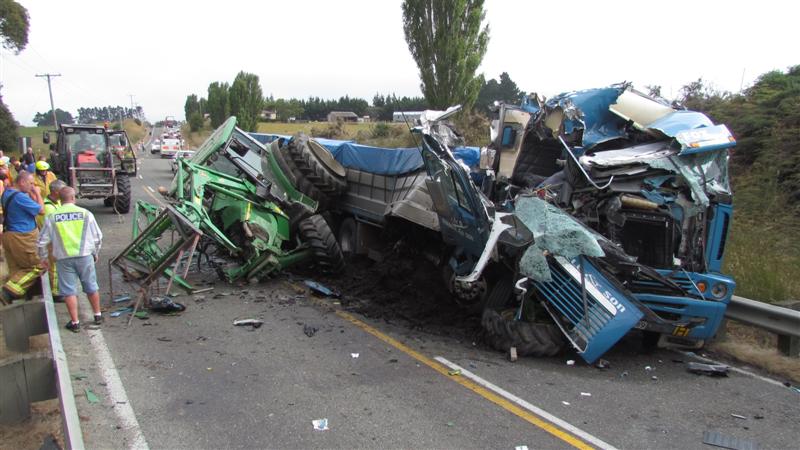Yesterday the Greens announced a policy to shift road freight to rail and shipping, aiming to reduce accidents and pollution. To achieve this they propose funding rail from the same budget that currently goes to roads. Given this is a policy we have suggested for some time, we find it difficult to disagree. Indeed this kind of funding shift could have significant benefits for public transport, not just freight.
The Prime Minister has rebuffed the idea of putting more money into rail, despite the Government pouring billions into roads that have a poor return on investment. While not all of the Greens proposals necessarily make sense, there is no good reason to oppose their central idea of funding road and rail on an equal footing.
Safe, Cleaner Freight
The driving force behind the Greens policy is that freight travelling by road imposes costs on society that we aren’t fully costing up. The main issues are increased emissions, air quality problems, road wear and tear, injuries and deaths as a result of having more trucks on the road. For example, at the moment 55 people die each year in accidents involving trucks, and 850 are seriously injured.
They propose shifting 50% of our freight to rail and sea transport in 10 years time; up from 30% now (measured in tonne-km). Given big increases in the numbers of trucks that are predicted to be on our roads in coming years, the Greens estimate this would drop the number of truck trips from the current level by about 6%.
There is pretty good evidence that road and rail freight aren’t on a level playing field. A 2005 report from the Ministry of Transport estimated that road freight paid for only 56% of its total costs to society, whereas rail freight paid 82%. You might hear people claiming that road freight costs are covered by the Emissions Trading Scheme, Road User Charges and ACC levies, but the work cited above showed that wasn’t the case. Current charges pick up the average costs of freight, but not the marginal costs. If you ask any economist that makes a big difference; society gets the best result when the price paid equals the marginal cost.
What is the upshot of this? The price paid by road freight customers is lower than it should be – at least relative to rail. If we correct this imbalance by funding road and rail on a level playing field as the Greens suggest then we will certainly see some freight shifting modes.
How much difference would this change make?
This is the key question, and at the moment there is no unbiased answer. The road freight lobby group argues that it will make little difference because road freight is more convenient for shorter trips. However the same lobbyists disagree that road freight is subsidised over rail as the above study suggests, so they don’t have a great deal of credibility there. Mainfreight is already on the record saying this is the right direction to go in. The only way to tell the right outcome is to change the way rail is funded, and see what happens.
Whether a simple change in funding would result in electrifying the main trunk line or Golden Triangle as the Greens suggest is another question completely. Auckland, Hamilton and Tauranga are the busiest freight corridor and electrifying this area would cost $860m. In the Greens’ view if the long term need to wean ourselves off fossil fuels is factored in, then this project would probably stack up under a cost benefit analysis. This is especially the case given they would be up against the Government’s Roads of National Significance, which had low ratios of benefit to cost. Of course, the only way to find out is to fund road and rail on an equal basis and see what happens.
The question is ‘Why Not’?
The Government has already signaled that they will continue to fund Kiwirail. They have also signaled that New Zealand Transport Agency (NZTA) will look at funding rail as an alternative to particular new roading projects. So why not go the whole hog and shift funding for rail infrastructure across to NZTA? This agency spends a lot of effort working out the most cost effective transport investments we can make as a country. Including rail in those calculations is a no brainer.
If the road lobby groups are correct and road freight is superior regardless of cost, this change would make no difference to the status quo. In other words, it wouldn’t be worth investing any more in rail. If it did make sense to invest more in rail over road, then road users would benefit by having less freight and/ or cars on the road, which is just as good as having a new road.
Given the changes already underway in NZTA and Kiwirail, it is hard to understand why Government would oppose moving rail into the NZTA budget. Do they dislike it because it wasn’t their idea – or because they are concerned about upsetting road freight industry? Or are they worried the cost benefit of investing in rail infrastructure will surpass the poor returns that are predicted from their Roads of National Significance, making those ideas look silly?

